
‘Fiction' vs 'Nonfiction' What's the Difference?
The difference between works of fiction and nonfiction is simple: fiction is not true while nonfiction is true. In other words, fiction books may be inspired by true events and/or people, but the narrative or significant portions of the story have been made up by the author.
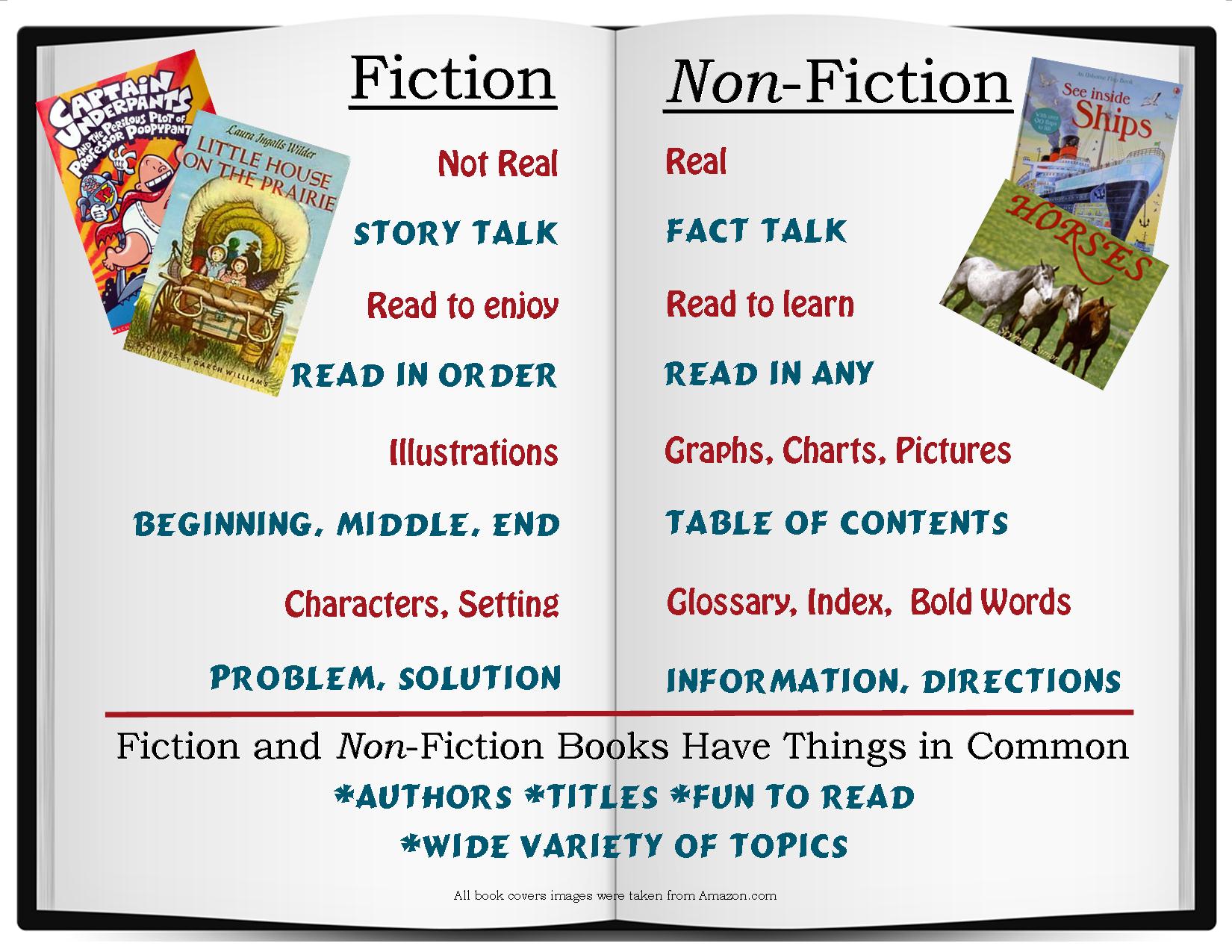
Fiction vs. NonFiction Francine
As a general rule, something that has any element of make-believe (whether that's dragons or a character that isn't real) is fiction, and anything that's 100% factual is nonfiction. [1] Think of it like this: when you write an essay, you're writing nonfiction; when you write a short story with you as the main character, you're writing fiction.

Difference Between Fiction And Nonfiction ContrastHub
Recipes Medical charts Comparing fiction and nonfiction texts Outside of reality vs. imagination, nonfiction and fiction writing possess several typical features. Fictional text features: Imaginary characters, settings, or periods A subjective narrative Novels, novellas, and short stories
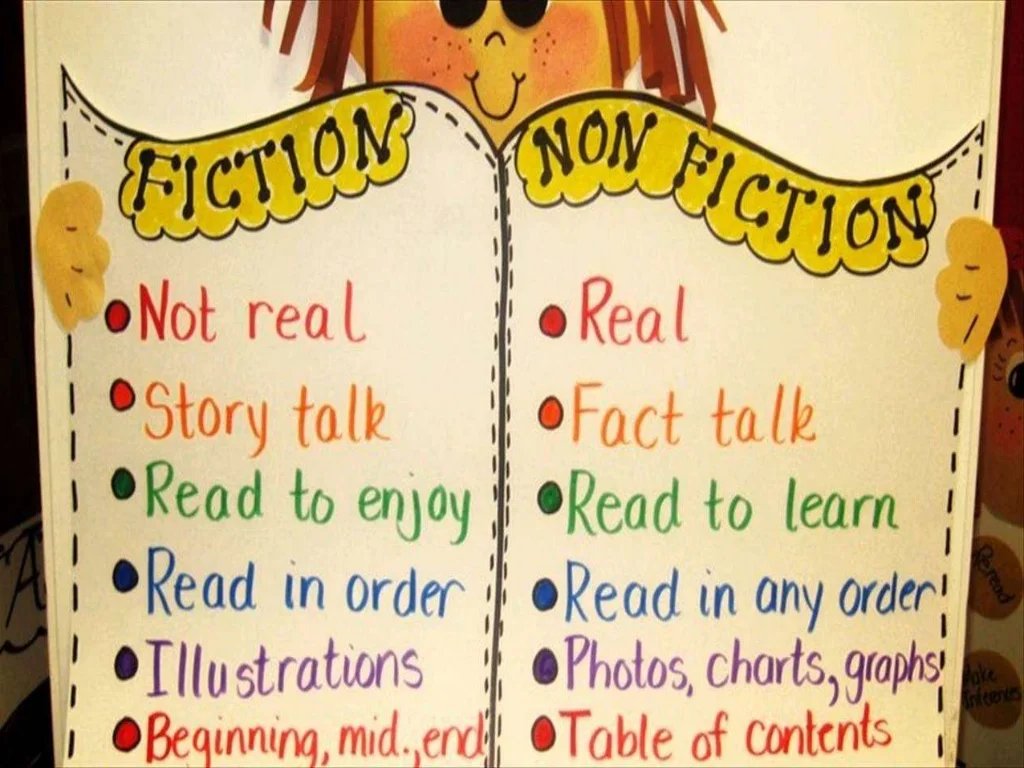
Differences between Fiction and Nonfiction
Is all fiction literature? Is all nonfiction literature? Fiction refers to literature created from the imagination. Mysteries, science fiction, romance, fantasy, chick lit, crime thrillers are all fiction genres. Whether or not all of these genres should be considered "literature" is a matter of opinion.

Fiction vs. Nonfiction Useful Difference between Fiction and
In general, fiction refers to plot, settings, and characters created from the imagination, while nonfiction refers to factual stories focused on actual events and people. However, the difference between these two genres is sometimes blurred, as the two often intersect.

Fiction vs NonFiction. This infographic provides the differences
What is fiction? Fiction is a literary genre that encompasses imaginative storytelling. It involves the creation of characters, settings, events, and narratives that do not exist in the real world. In fiction, authors use their creativity to write stories that are often for the purpose of entertainment, exploring themes, or artistic expression.

What is Fiction and Nonfiction?
The main difference between fiction and non-fiction is the basis of their content. Fiction is subject to the author's imagination and artistic freedom while nonfiction is based on pure facts and accurate information. Fiction appeals to human emotion; it aims to entertain. On the other hand, nonfiction appeals to the human intellect; it aims.
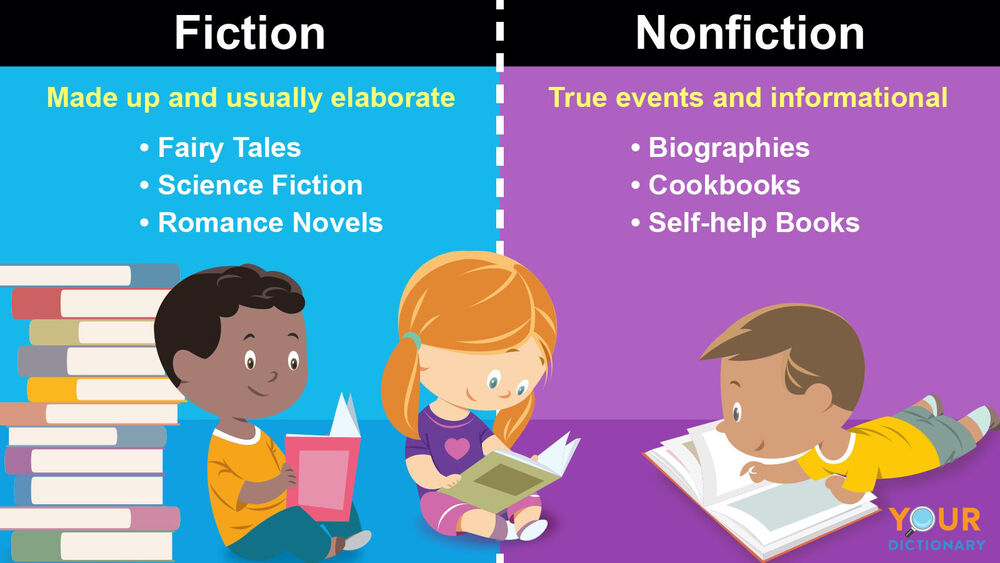
Core Difference Between Fiction and Nonfiction Writing YourDictionary
These works of literary nonfiction have character, setting, plot, conflict, figurative language, and theme just like literary fiction. Clarification: The test of categorizing a work between fiction and non-fiction is not whether there is proof the story is true, but whether it CLAIMS to be true. For example, someone writing a first hand account.
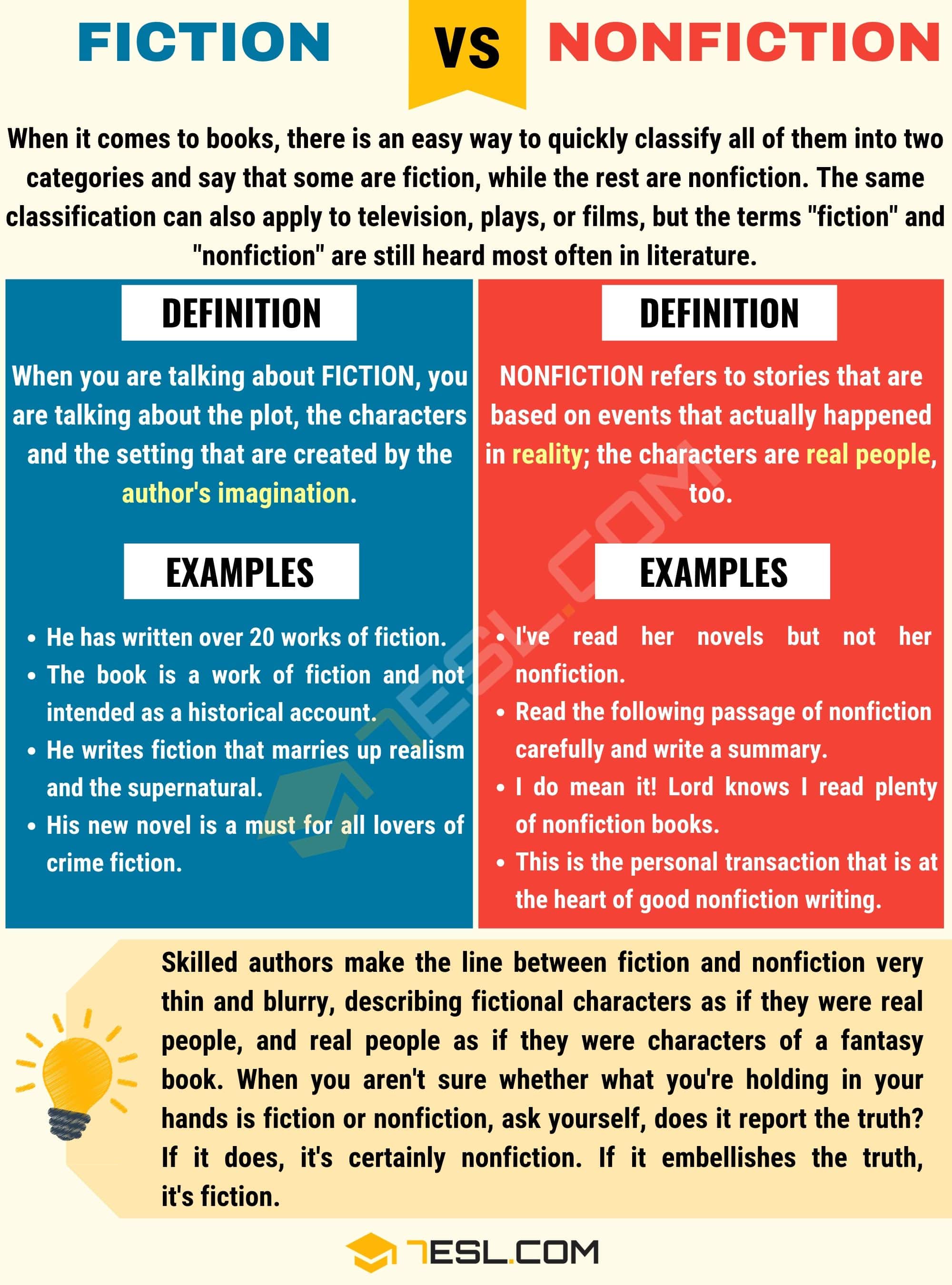
Fiction vs. Nonfiction Useful Difference between Fiction and
While the main difference between fiction vs. nonfiction is pretty straightforward—nonfiction has to be 100% factual —that doesn't mean some of the same techniques can't be applied to both types of writing. Many types of nonfiction, such as memoirs, biographies, and journalistic reports, utilize narrative techniques to tell a true story.
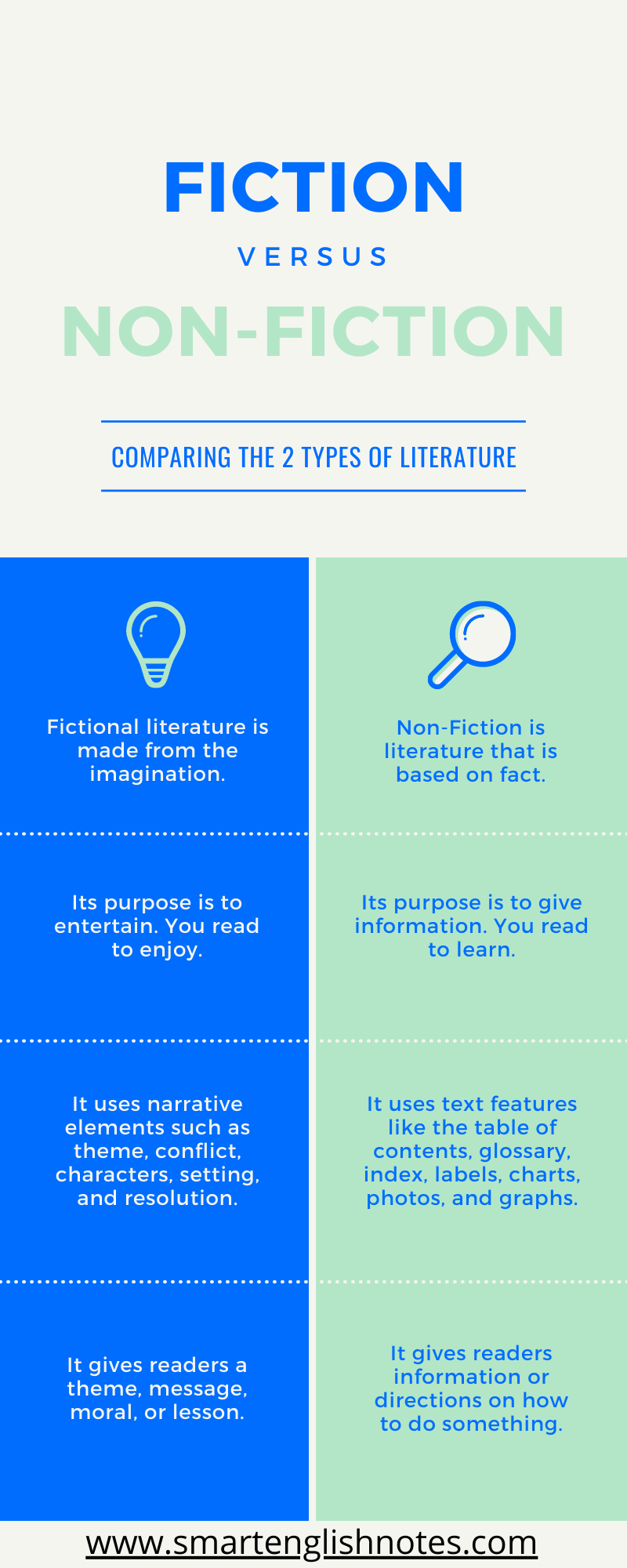
Difference Between Fiction And Nonfiction Smart English Notes
Our Fiction Department also has a large selection of popular movies and television shows on DVD. "Nonfiction" refers to literature based in fact. It is the broadest category of literature. The Nonfiction Department has books and videos in many categories including biography, business, cooking, health and fitness, pets, crafts, home decorating.

Fiction and Nonfiction Digital Storytime Lesson Librarians Teach
The main difference between the two genres is that fiction is based on imaginary events, while nonfiction is based on real events. However, there are many subgenres of both fiction and nonfiction, and the distinction between the two is not always clear-cut. Table of Contents What Is Fiction? Fiction is a story that is not based on fact.

FICTION & NONFICTION Definition & Examples YouTube
| 6 min read Table of Contents: Key differences between Fiction vs. Nonfiction Real vs. Fictional: Storytelling vs. Information Use of Imagination: Entertainment vs. Education: Objective vs. Subjective Thinking Factors to Consider Fiction vs. Nonfiction Personal Interests and Preferences: Balancing Entertainment and Education:
First Grade Wow Fiction and Non Fiction
- The Wall Street Journal Novels are a classic example of fictional prose. If you enjoy reading novels, you are a fan of reading fiction. When to Use Nonfiction What does nonfiction mean? Nonfiction works are based on real people or events. Memoirs, biographies, documentaries, and works of history are all examples of nonfiction.

FICTION vs NONFICTION How to Use Fiction and Nonfiction Correctly
But which one is for you? Whether you're a voracious reader or an aspiring writer, understanding these differences can transform your reading choices and writing style. This article delves into the core characteristics of both fiction and nonfiction, uncovering the essence of imagination in fiction and the grounding in reality of nonfiction.

PPT What’s the difference between fiction and nonfiction ? PowerPoint
Fiction is one that is based on imagination and fantasies. As against, Nonfiction implies the form of writing which talks about real events, people and facts. In short, we can say that fiction represents something which is not true, it is unreal, whereas nonfiction indicates a factual account.
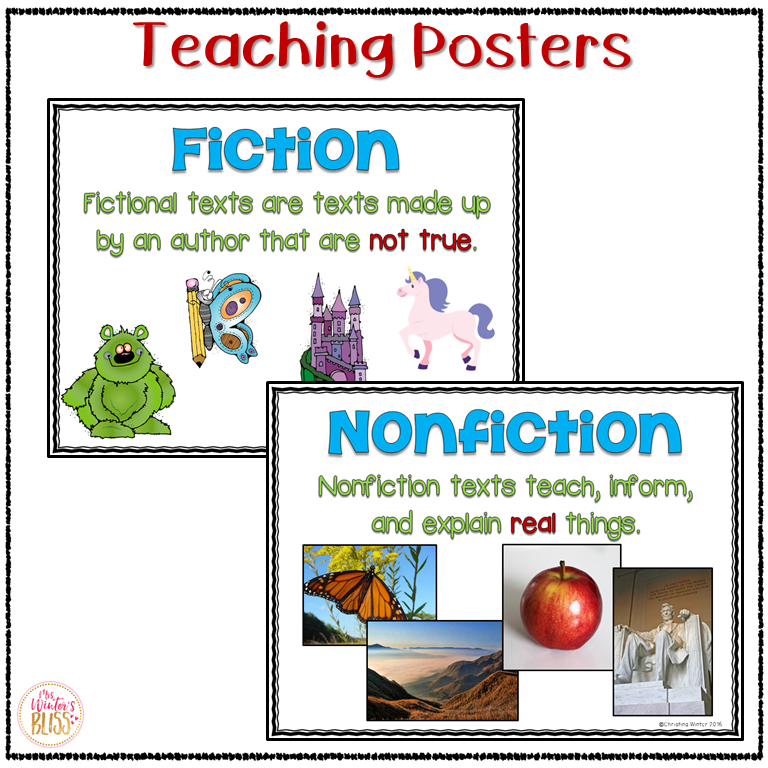
Comparing Fiction and Nonfiction Mrs. Winter's Bliss
What's the Difference Between "Fiction" and "Nonfiction"? Fiction refers to "something created in the imagination ." Therefore, fictional writing is based on events that the author made up rather than real ones. Nonfiction is "writing that revolves around facts, real people, and events that actually occurred ." Table of Contents